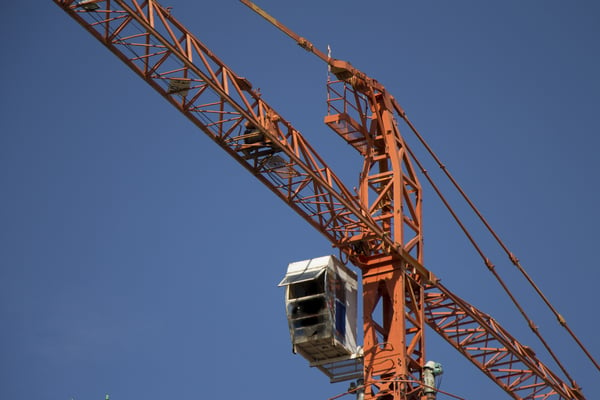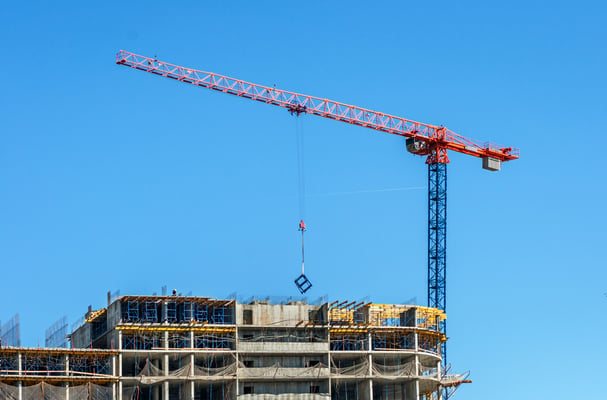Any city's skyline will likely include at least a few tower cranes, which are among the largest pieces of equipment used in construction projects. Construction companies use tower cranes to lift heavy materials such as steel and concrete. Large devices such as acetylene torches, engines and generators are also transported by tower cranes.
Because tower cranes are slender compared to tall buildings, their lifting capacity can easily be underestimated based on appearance. How can tower crane stand without tipping over? How are you able to lift so much weight? Is the crane higher along with the building? In this article, the basic principles of tower cranes and their functionality will be discussed.
Construction management services make the construction process safer and more efficient.
Tower Crane Parts
Tower cranes in general are made up of three main parts: the base, the mast or tower and the slewing unit.
BASE: The base is the main support of the crane. It is connected to a large concrete foundation that supports all the weight.
MAST OR TOWER: The mast is connected to the base and is the support structure that gives the crane its height. The mast has a large triangular lattice structure, which gives the crane strength.
SWIVEL UNIT: The slewing unit consists of a gear and a motor, fixed to the top of the mast, allowing the crane to rotate along its axis. In turn, the rotating unit consists of three parts:
- Jib or working arm: Horizontal element that carries the load, with a cart that runs along its length to move the load in and out.
- Machine arm: A shorter horizontal element that supports the load lifting motor. It also contains electronic controls, cable drum and concrete counterweights to maintain balance.
- Operator's cabin: Consists of the space in which the operator performs all crane functions.
Tower Crane Specifications

A typical tower crane has the following specifications, but note that there are differences depending on the model and manufacturer:
- Maximum unsupported height: 265 feet or 80 meters. It can reach a greater height if fixed to the building, as the building rises around the crane.
- Maximum range: 230 feet or 70 meters
- Maximum lifting power: 19.8 tons or 18 metric tons
- Counterweights: 20 tons or 16.3 metric tons
Note that the maximum load is 18 tons, but the crane cannot lift that much weight when the load is positioned at the end of the boom. The closer the load is to the mast, the more weight the crane can safely lift. Operators have two limit switches to prevent overloading: a maximum load switch to stay below 18 metric tons and a maximum moment switch to protect the crane from the bending force of the load.
Weather monitoring on construction sites is important, but especially when tower cranes are used. A strong gust of wind can destabilize the load and the structure, causing it to collapse. Project managers must constantly check weather forecasts and avoid lifting operations in unfavorable weather conditions. A weather monitoring system at project sites can warn of dangerous wind conditions that are not included in forecasts.
Tower Crane Support System
One of the first questions someone might ask when looking at a tower crane is do these structures stand upright. There are several elements that contribute to the stability of the tower crane. The concrete pad is a concrete foundation made by the construction company several weeks before the crane arrives. Typical cushion measurements are 30x30x4 feet (10x10x1.3 meters), with a weight of about 400,000 pounds. Large anchor bolts are deeply embedded in the concrete base and these elements support the crane base.

Tower cranes are delivered to construction projects in parts, which are then assembled on site. Qualified installers assemble the boom and machine section, these horizontal elements are then positioned on the mast, which is initially just 12 meters high. Once this assembly is complete, the counterweights are placed by a mobile crane. The mast rises from the concrete base and remains upright thanks to its triangular structure. To increase the height of the crane, the crew adds sections to the mast with a climbing frame:
- A weight is hung from the boom to balance the counterweight.
- The rotating unit is detached from the top of the mast and hydraulic rams on the upper climber push the rotating unit up 20 feet.
- The crane operator uses the crane to hoist another 20-foot mast section into the opening and then it is bolted into place.
These steps are repeated continuously until the desired height is reached. When the time has come to remove the tower crane from the construction site, the crane dismantles its own mast and smaller cranes are used to dismantle the rest.

